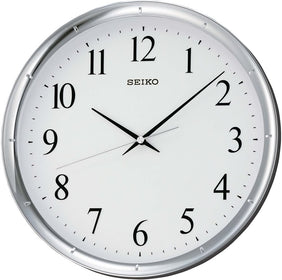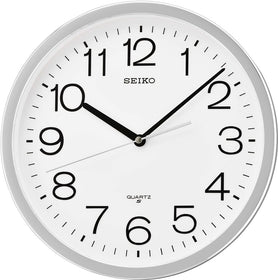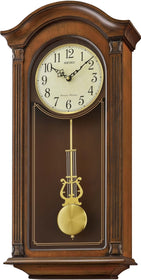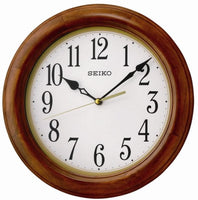Clocks
Popular Styles

Modern
Clocks
Contemporary and innovative, modern lighting underscores futuristic form and structure.

Traditional
Clocks
Predictable yet dignified lines and curves that are classic in nature, yet elegant by design.

Farmhouse
Clocks
By day light or by barn light, our farmhouse lighting Style cultivates historic charm that is modest, functional and genuine.

Mission
Clocks
Art glass with geometric shapes and solid materials radiate substance and tranquility inspired by the Arts and Crafts movement.

Casual
Clocks
Informal and comfortable, this relaxed style accentuates an airy living space.

Industrial
Clocks
Heavy on the unrefined and rustic aesthetic elements and inspired by early century warehouse lighting fixtures that will captivate you.

European
Clocks
Highly ornate, and dedicated to elegant lighting designs with sophisticated curves and iron clad scrolls rich in historic old world appeal.
Shop by Height:
Shop by Finish
Clocks
Clocks
Clocks
Clocks
Clocks
Clocks
Clocks
Clocks
Clocks
Popular Clocks - View All




















Brand Name Clocks
Clocks
Are Clocks Still Important?
In the era of cell-phones with built-in clocks, many people wonder - do I still need a clock? A clock is a device, sometimes mechanical, sometimes digital, and sometimes some of both, that allows you to know what time it is throughout the day. A stand-alone timepiece is more than just a way to tell time, however. There are many different types of clock, and each has a distinct aesthetic and set of uses. From antique to modern, and from grandfather to alarm, there is a clock for nearly every room in the home- not just your pocket!
Wall Clocks
Wall clocks are ubiquitous- you can find them in almost every building.
They are created to be mounted on walls where they can be seen by anyone in the room. The benefits of having a wall clock include being able to easily see the time of the day at any angle of the room.
There are different types of unique wall clocks including digital and pendulum types. Many modern wall clocks come in analog and digital, so you get the best of both worlds. A decorative wall clock that also displays time digitally.
Some analog wall clocks with pendulums are such premium items that they make wonderful family heirlooms. On the other end of the spectrum, other digital wall clocks are made to light up, come alive with animation, and play music on the hour. If you search, you are sure to find an excellent choice of wall clocks.
Large Wall Clocks
In order for a wall clock to be considered large, it is typically over 20 inches long or wide. Intuitively, they are made to be proportionate for larger rooms, and may not be appropriate for smaller rooms like bathrooms or bedrooms..
One benefit of having a large wall clock is that their noticeable style can complement the rest of the room’s decor. Some statement clocks can even become the center of attention in the room.
Giant wall clocks have a unique balance in practicality and style. They are both useful to see the time and eye-catching.
Atomic Clocks
Atomic clocks are radio-controlled, allowing them to be precise and accurate at all times with their ability to pick up and sync broadcasted signals.
According to nist.gov, atomic clocks are designed to measure the precise length of a second (SI). They also require no effort to change during daylight savings time.
These clocks are in 60 kHz and are located in the LF portion of the radio spectrum. They pick up broadcasted signals from NIST radio station WWV in Fort Collins, Colorado.
An atomic clock is perfect for any environment that requires accuracy in the exact second, such as a scientific lab or business. They are also excellent for any user who prefers accuracy to the exact second without having to actually adjust the hour.
Musical Clocks
The musical clock was invented in 1598 by Nicholas Vallin, son of the famous clockmaker, John Vallin.
These wonderful music alarm clocks were invented to play a calming and classic melody with each hour that passes by. The tunes vary between clocks and range from seasonal and classical music to show tunes and modern day hits.
The benefits include learning of each passing hour through hearing a beautiful tune instead of having to actually see it. Being able to tell time without seeing a clock makes them great for large spaces, and in fact, they are often found in public places like churches or university libraries.
Excellent examples of well-known musical clocks are the famous Big Ben in London and the Delacorte Music Clock in Central Park.
Desk Clocks
Desk Clocks are small and portable devices that are capable of being placed on any table. The benefit includes maintaining wall space in the room while being in hands reach to change.
They can be useful for any room that has a desk. A desk clock has a wide variety of uses, including checking what time it is for a business meeting, alerting when an event is about to occur and even being used for style purposes.
Desktop clocks vary in style, and you can be sure to find one that fits the your chosen aesthetic.Any person that doesn’t want to lose wall space, and wants an accent piece on their desk should check out our selection of desk clocks.
Alarm Clocks
Alarm clocks alert the user when it has reached a previously selected time.
Alarm clocks have many important uses for the user. From waking up to get to work to being sent an alert for an event during a busy day, alarm clocks are an essential aid to being on time throughout the day.
The average alarm clock has a display, AM and FM radio, power source, internal circuitry, speakers, and other buttons and switches.
The user is able to decide when and how they want to be alerted. The ways to be alerted vary depending on the clock; some are only capable of AM and FM radio while others also include CD’s that can be used.
What are Mantel Clocks?
Mantel clocks are small antique clocks that complete the look of any room. The benefits include not having to hang them up, instead placing them as a centerpiece in the room with a fireplace.
A mantel clock creates a special vibe to a room, adding extra comfort and warmth to any room with a fireplace.
The style of the antique mantel clock varies depending on the time it was built. According to homeguides, Mantel clocks are often produced with high-quality materials such as hardwood solids or gold trim.
The original antique mantel clocks were originally created by the French in the 18th century. These were built with ornate trim with bronze, pewter, and brass trim adornments.
Seth Thomas mantel clocks were created from 1881 to 1918 in the United States. They were made out of marble, iron, and adamantine.
In the late 1980’s, Howard Miller mantel clocks were created with distinct modern styling.
Grandfather Clocks
Grandfather clocks are large and heavy with a pendulum inside the case. The case is often elaborately decorated as first was created by William Clement in 1670.
These clocks are often used in living and dining rooms to be showcased for guests and give off a very classic feel to their interior design. An excellent benefit of having this type of clock is being able to learn of every passing hour by hearing a beautiful sound.
There are different types of grandfather clocks, including Comtoise, Bornholm, and Mora. The differences between these three are the trim and movements.
Because of their weight-based, mechanical design, with a grandfather clock, you must consistently check on it to maintain accuracy. Some have eight-day movements while others have just 30-hour movements.
With 30 hour movements, you must wind the clocks each day to maintain accuracy. With 8 day movements, you only need to wind weekly to maintain accuracy.
One of the top brands of grandfather clocks is the Howard Miller grandfather clock. Starting out in the 1960’s, Howard Miller has been making grandfather clocks for over 85 years. They now have the title of “World’s Largest Grandfather Clock Manufacturer” with their elegant and classic design.
These clocks were originally called longcase clocks before Henry Clay wrote a song titled My Grand Father Clock in 1876 after hearing a story about one in 1875 from some workers at an inn. The song became a hit and soon replaced long cased clocks as the name for the large and classic clocks.
Outdoor Clocks
Outdoor clocks are specifically designed to resist weather damage and keep you informed of the time of day while outside. Whether they’re used on the patio, yard, or garden, they make great, functional decoration.
With an Outdoor clock, the user will always know the time of day. This is important for gardening, farming, and other outdoor activities to understand how much time there is before sunset. Unless you own a sundial, there’s no better way to tell the time outdoors.















